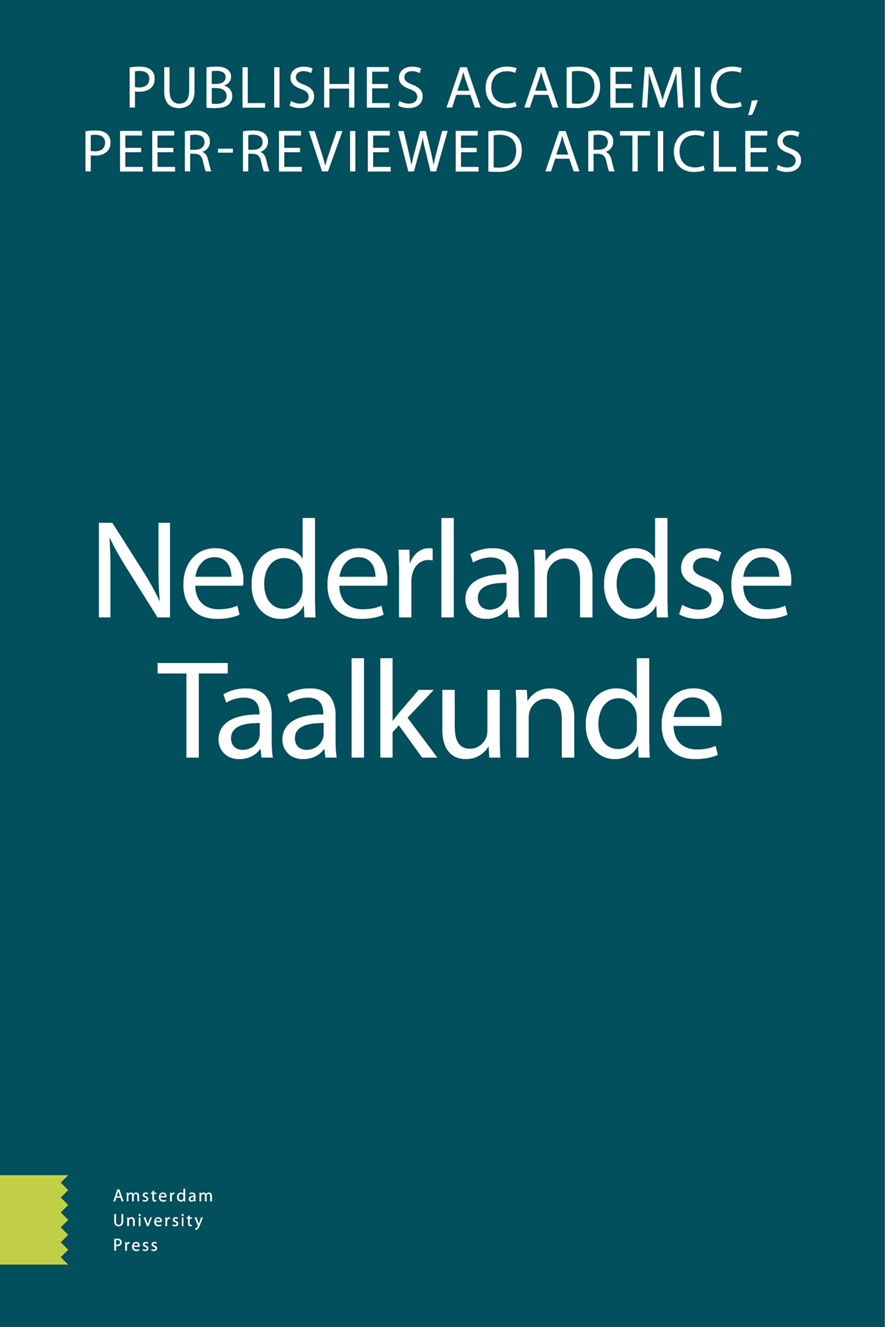- Home
- A-Z Publications
- Nederlandse Taalkunde
- Previous Issues
- Volume 27, Issue 1, 2022
Nederlandse Taalkunde - Volume 27, Issue 1, 2022
Volume 27, Issue 1, 2022
-
-
Why syntax is all about semantics and pragmatics
More LessAuthor: Egbert FortuinAbstractIn this paper I reanalyze the data provided in Barbiers (2018) on Dutch adverbs which occur in an embedded (complement) clause while they semantically pertain to the matrix (main) clause (or vice versa). Whereas Barbiers analyzes adverb placement in Dutch along the lines of the Cinque hierarchy (Cinque 1999), I will propose an analysis and explanation along semantic lines which does not need any movement, thereby stressing the importance of semantics and pragmatics in syntactic analyses.
-
-
-
Apparent syntax-semantics mismatches in the distribution of adverbs. Why semantics alone is not enough
More LessAuthor: Sjef BarbiersAbstractFortuin (2022) argues that the syntactic analysis of two types of syntax-semantics mismatches in the distribution of adverbs proposed in Barbiers (2018) can be reduced to semantics. This would have the advantage that syntactic movement does not need to be assumed. Although I agree that the syntactic analysis I provided in (2018), and, more generally, the syntactic hierarchy of adverbs proposed in Cinque (1999), needs to be complemented with a semantic analysis, I would like to claim in this reply that the semantic analysis provided by Fortuin cannot do the job and does not make syntactic movement a superfluous ingredient of the analysis.
-
-
-
Generatieve syntaxis van het Nederlands
More LessAuthor: Norbert CorverAbstractThis paper presents an overview of the generative-linguistic study of Dutch syntax over the last five decades. This is done from three perspectives: a quantitative perspective, a theoretical perspective, and a case study perspective, specifically the case of manner-adverbial patterns of the type A+P; for example, hardop ‘aloud’.
-
-
-
Distributed Morphology
More LessAuthors: Marijke De Belder & Jan DonAbstractIn this paper we aim to explain and illustrate the theory of Distributed Morphology for non-specialists. The goal is to take away any misunderstandings and to provide some illustrations of the workings of the theory, mainly on the basis of data from Dutch. Distributed Morphology is a theory of morphology that embraces the so-called Separation Hypothesis: derivation – the forming of a new word by some abstract operation – is separated from affixation – the realization or spell-out of the abstract operation by the addition of some phonologically specified element. The means used by DM to implement the Separation Hypothesis is by late (after syntax) insertion of affixes. Furthermore, Distributed Morphology claims that there is no separate component of the grammar where word-formation takes place. The operations that form new words are the same operations that may create syntactic phrases. Starting from these fundamental claims, we go into some detail of the way Distributed Morphology accounts for different morphological patterns. The paper also points at some cognate, but alternative, approaches to word-formation and inflection. In particular, we briefly address Borer’s so-called exo-skeletal model, and the nanosyntactic approach.
-
-
-
Rillen van angst en blaken van zelfvertrouwen
More LessAuthor: Jack HoeksemaAbstractDutch van is used to mark emotions and feelings which cause bodily reactions and mental states in combinations such as rillen van angst ‘shiver with fear’, sprakeloos van verbazing ‘speechless with astonishment’ and blaken van zelfvertrouwen ‘beam with self-confidence’. The classification of emotions along the four dimensions of evaluation (valence), potency (control), activation (arousal) and (un)predictability of Fontaine (2006) is discussed and shown to be of linguistic interest. Predicates such as stralen ‘beam’ or het uitschreeuwen ‘to cry (it) out’ have strong collocation relations with words denoting emotional extremes on one of the four axes, such as high valence or high arousal. While most of the paper is devoted to the construction with causative van, some suggestive evidence from adverbs of degree is offered to make a broader case for the usefulness of the four dimensions in linguistic research.
-
Volumes & issues
Most Read This Month

Most Cited Most Cited RSS feed
-
-
Goed of fout
Authors: Hans Bennis & Frans Hinskens
-
- More Less

